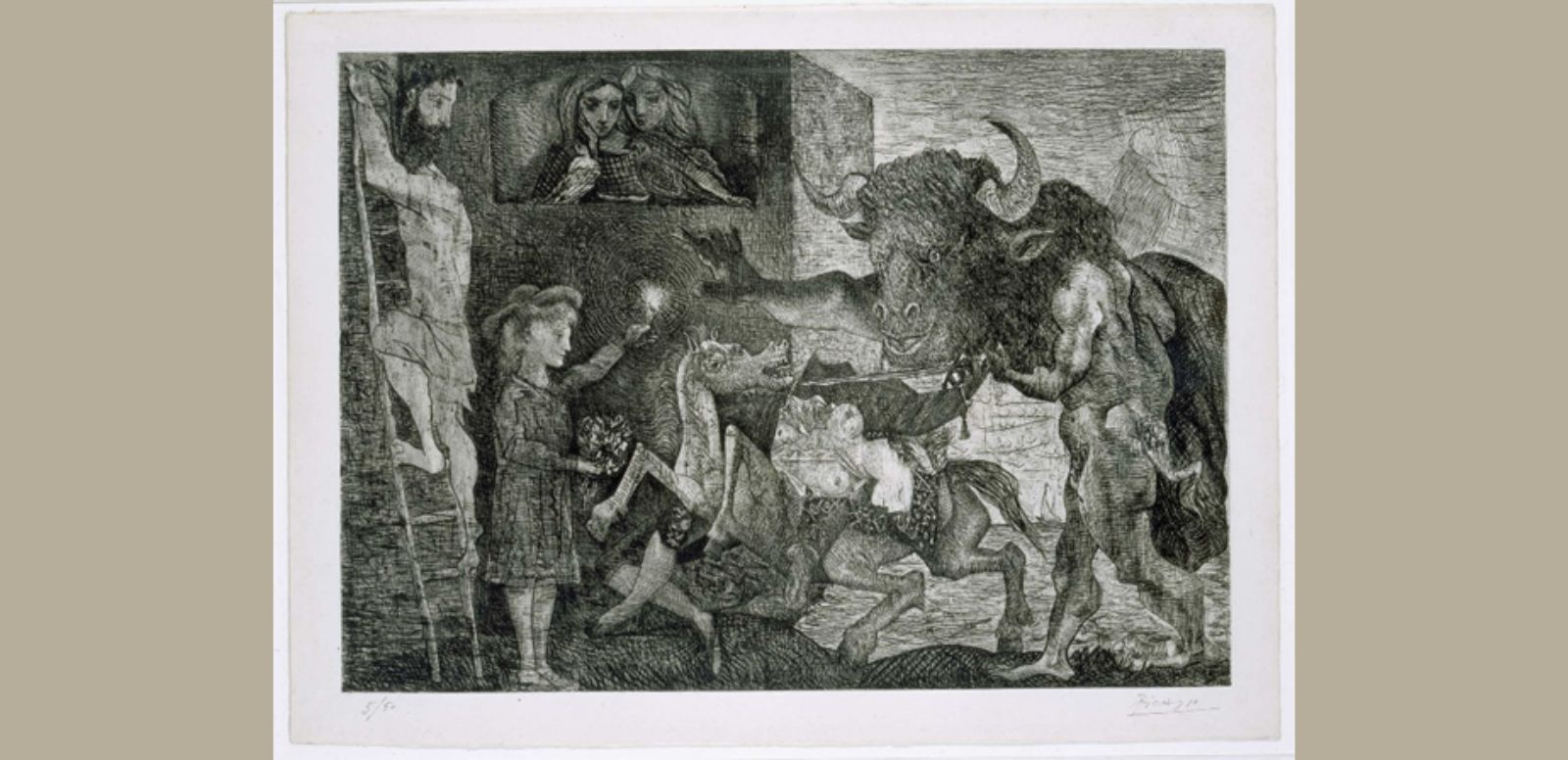
Museu Picasso Barcelona
© Sucesión Picasso, VEGAP, Madrid, 2024
In 1935, Picasso created Minotauromaquia on a copper plate. An engraving that has as its protagonist the Minotaur, a mythological figure born from the union of Pasiphae and a bull. This engraving, one of the most outstanding of Picasso and of the 20th century, is considered an iconographic predecessor of Guernica (1937). The Minotaur, seen as the artist's "alter ego," plays a central and recurring role in his work of the 1930s, marking his connection to surrealism.
Picasso's composition is symbolic and difficult to interpret, combining tenderness and violence, which gives it great visual poetics and reflects the turbulent times in which it was made, in the run-up to the Spanish Civil War. Around the monster, Picasso builds a scene with allusions to works by masters such as Michelangelo, Velázquez, Goya and Delacroix.
In the center of the composition, between the blind Minotaur and the young woman with features reminiscent of Marie-Thérèse Walter, stands a pregnant bullfighter on the back of a wounded horse. This figure could allude to Marie-Thérèse, then pregnant with her daughter Maya. On the left, a horrified man climbs a ladder, hiding his nakedness with a cloth, which in turn refers to the Crucifixión (1930). At the top, two girls contemplate the scene from a window where pigeons are resting, and in the background a sailboat can be seen on the horizon.
This copy was donated by Picasso to the Museus d'Art de Barcelona in 1938, in the middle of the Civil War, and in 1963, with the creation of the Museu Picasso de Barcelona, it became part of his collection.
Sources:
Museu Picasso Barcelona: https://museupicassobcn.cat/es/coleccion/obra-de-arte/la-minotauromaquia
Museum of Modern Art: https://www.moma.org/collection/works/60110
Museo Nacional Centro de Arte Reina Sofía: https://www.museoreinasofia.es/exposiciones/picasso-minotaur

